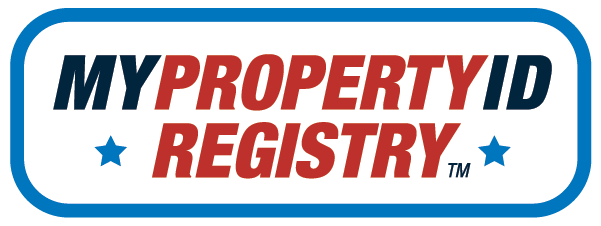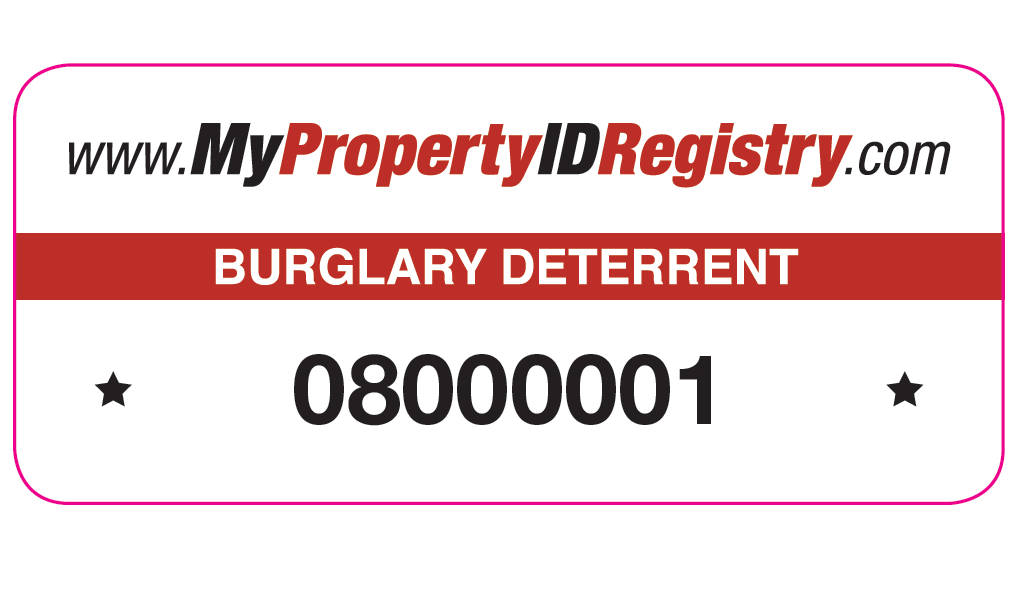The highly reliable ID tag —
ID tags are still a viable security measure because they are the tip of the spear of a more complex system designed to safeguard property from theft and improve recovery. Yes, it’s low tech, but it’s a tried-and-true approach that has stood the test of time.
Anyone who has worked for a large corporation or government agency, attended a large university or small college, visited a hospital or a local library, will have noticed the ID tags on the back of every piece of property those organizations own.
From a distance, ID tags are usually about the size of a return address label, and they frequently contain just two things: the organization’s name and a unique number. That’s it! There are no fancy electronics and, often, not even a barcode.
Enterprise asset management
ID tags come in many shapes, sizes, colors and materials. But they are much more than a mere sticker. They are advanced technology. They all use industrial glue on the back and have a surface that is tamper resistant. Once the adhesive has set, they are extremely difficult to pull or scrape off.
Think of the registration tags for motor vehicles. They come in many shapes, sizes and designs. Whether on the license plate or inside the windshield, they require significant effort to remove.
It’s what’s behind the scenes of that ID tag that most people aren’t aware of. Go back to the motor vehicle example. In the computer age, every VIN, registration, license plate, make, model, owner and address is recorded in massive databases that law enforcement agencies tap into.
At the institutional level, organizations are doing the same thing. They adhere an ID tag with a unique number to each piece of property. They record the make, model, serial number and any other pertinent data. Then all that information is stored in large databases to be accessed for various purposes.
Operation Identification
Beginning in the 1960s, with the wide availability of the consumer etching tool, the police discovered a way for citizens to mark individual pieces of property in their homes or small businesses with a Social Security number or driver’s license number. Citizens would then record the serial numbers of those items on a sheet of paper, and place a generic warning sign on doors to warn thieves.
By the 1970s, this strategy had become so popular and well researched that it was embraced by the US Department of Justice, the FBI, the International Association of Chiefs of Police, the National Association of Sheriffs, and many other groups. In 1979, it was officially dubbed “Operation Identification.” http://www.gao.gov/assets/130/126467.pdf
Migration to the web
In the age of the internet, a new aspect of ID tagging has emerged. It is the miniaturization of institutional asset management strategies described above, merged together with the old-fashioned Operation Identification strategy. It takes Institutional asset management and shrinks it down for individual citizens and small end users.
https://mypropertyidregistry.com/2017/05/29/operation-id-modernized
What seems, at first blush, like the most flimsy of security systems is actually a sophisticated and well-proven strategy that is anchored by two global management standards. 1). The ID tag must contain the name of the company and the ID tag must have large numbers. 2). To protect the identity of the rightful owners, the website must securely store the information about them. That’s it!
LPS1224-3.1NCDraftDC.docx (redbooklive.com)
LPS1225-3.2NCDraftDC.docx (redbooklive.com)
The most advanced asset management systems now provide a portal to get a privacy-protected message to the rightful owner instantly. The ID tag numbers are stored on a private database. If something has been stolen, recovered or found, law enforcement or a Good Samaritan can simply go to the website on the tag and send a privacy-protected note to the rightful owner.
https://mypropertyidregistry.com/found
Now, homeowners, small businesses, renters, students and active duty military, become the asset managers of their own portable electronics and tools. It puts power back into the hands of individual citizens and aids the police and Good Samaritans.
A useful tool for the police and Good Samaritans
What law enforcement agency wouldn’t love to have the serial numbers of stolen items stapled to the back of a police report? What law enforcement agency wouldn’t want citizens to have a low-cost, low-tech security system that warns burglars away with warning signs and marked property?
What law enforcement agency wouldn’t love to catch a thief red-handed with ID tagged property? Then, with a smartphone, instantaneously get a message to the rightful owner? What a sweet, effortless arrest.
What Good Samaritan wouldn’t love the chance to find a piece of ID tagged property and get it back into the hands of its rightful owner with little hassle or inconvenience?
The internet and miniaturized asset management strategies have made this all possible. Now, the next big hurdle is adoption. It’s like getting people to buckle their seat belts. It’s time to get citizens on board by having them tag property with an ID.



